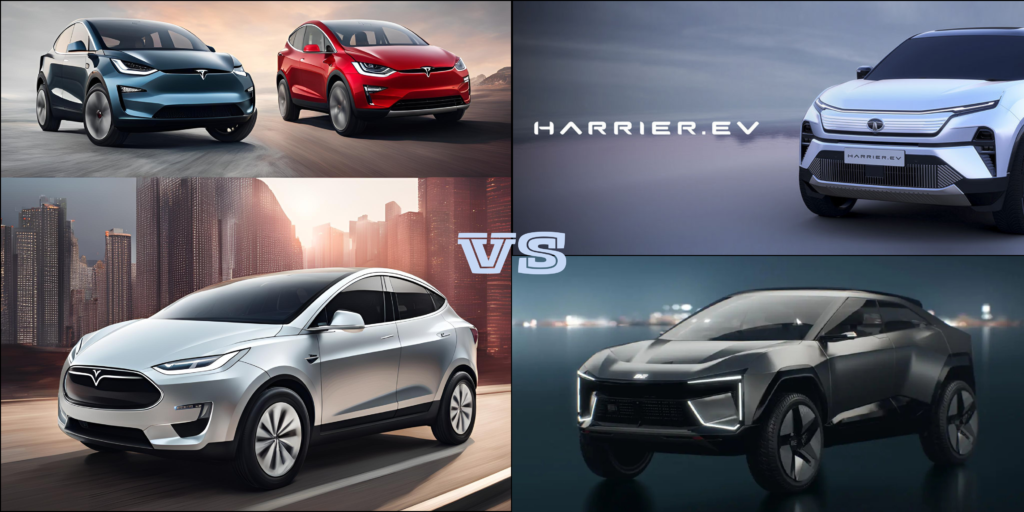Tesla’s Entry into India: A Threat to Mahindra and Tata in the EV Sector?
The Indian electric vehicle (EV) market is undergoing a rapid transformation, driven by government incentives, growing environmental awareness, and advancements in technology. Domestic automakers like Mahindra and Tata Motors have been at the forefront of this revolution, capturing a significant share of the market with affordable and practical EVs. However, the impending entry of Tesla, the global EV giant, has sparked discussions about whether it could disrupt the dominance of these homegrown players. Could Tesla pose a serious threat to Mahindra and Tata in India’s EV sector? Let’s explore.
Tesla’s Global Appeal and Brand Power
Tesla is more than just an automaker; it’s a symbol of innovation, luxury, and sustainability. With a reputation for producing high performance, long range electric vehicles, Tesla has cultivated a loyal customer base worldwide. In India, where premium brands often enjoy aspirational value, Tesla’s entry could attract a significant number of buyers, especially in urban areas.
For Mahindra and Tata, which have built their EV strategies around affordability and practicality, Tesla’s brand appeal could be a gamechanger. While Tata’s Nexon EV and Mahindra’s XUV400 have been well received, they lack the global cachet and cuttingedge allure that Tesla brings to the table.
Technological Edge: Tesla’s Ace in the Hole
One of Tesla’s biggest strengths is its technological superiority. From advanced battery systems to autonomous driving features, Tesla’s EVs are often seen as benchmarks in the industry.
Key advantages include:
- Long Range Batteries: Tesla’s vehicles offer some of the longest ranges in the EV market, addressing the critical issue of range anxiety.
- Fast Charging: Tesla’s proprietary Supercharger network, which it plans to introduce in India, could set a new standard for charging infrastructure.
- Software and AI: Tesla’s over the air software updates and AI driven features are far ahead of what Indian automakers currently offer.
For Mahindra and Tata, keeping up with Tesla’s technological advancements will be a significant challenge. While both companies have made strides in developing affordable EVs, they may need to ramp up their R&D efforts to compete with Tesla’s innovation.
Charging Infrastructure: A Potential Game Changer
One of the biggest hurdles for EV adoption in India is the lack of robust charging infrastructure. Tesla’s plan to establish its Supercharger network in the country could give it a significant edge. A reliable and widespread charging network would not only enhance the appeal of Tesla vehicles but also set a new benchmark for the industry. In contrast, Tata and Mahindra rely on thirdparty charging networks, which are still in the early stages of development. If Tesla can deliver on its promise of a seamless charging experience, it could attract customers who are hesitant to switch to EVs due to infrastructure concerns.
Pricing and Market Strategy
Tesla is expected to enter the Indian market with its premium models, such as the Model 3 and Model Y, targeting affluent buyers in metropolitan cities. While this means Tesla won’t directly compete with Tata and Mahindra in the mass market initially, its long term strategy could include more affordable models.
Moreover, Tesla’s plans to set up local manufacturing in India could help reduce costs and make its vehicles more competitive in terms of pricing. If Tesla can offer a compelling value proposition, it could eventually encroach on the market share of domestic players.
Government Policies and Incentives
The Indian government has been actively promoting EV adoption through initiatives like the FAMEII scheme, lower GST rates, and subsidies for manufacturers. Tesla’s entry could further accelerate this momentum, but it could also intensify competition for government incentives.
For Tata and Mahindra, which have benefited from these policies, Tesla’s presence could mean increased pressure to innovate and reduce costs. However, the government’s focus on localization and “Make in India” could level the playing field, as Tesla will need to invest in local production to avail itself of these benefits.
Challenges for Tesla in India
While Tesla’s entry is undoubtedly exciting, it won’t be without challenges. The Indian market is unique, with its own set of complexities:
A. Price Sensitivity: The majority of Indian consumers are highly price sensitive, and Tesla’s premium pricing could limit its appeal to a niche audience.
B. Localization: Adapting to Indian road conditions, consumer preferences, and regulatory requirements will be critical for Tesla’s success.
C. Competition from Tata and Mahindra: Both companies have a strong foothold in the Indian market, with established dealership networks and a deep understanding of local consumer behavior.
The Road Ahead
Tesla’s entry into India could mark a turning point for the country’s EV sector. While it poses a significant threat to Mahindra and Tata, particularly in the premium segment, it could also push these domestic players to innovate and improve their offerings. For Indian consumers, this competition is likely to result in better products, more choices, and faster adoption of EVs.
In the long run, Tesla’s success will depend on its ability to localize production, offer competitive pricing, and adapt to the unique demands of the Indian market. Meanwhile, Tata and Mahindra will need to leverage their first mover advantage, strengthen their technological capabilities, and expand their charging infrastructure to stay ahead in the race.
Conclusion
Tesla’s arrival in India is set to shake up the EV landscape, challenging established players like Mahindra and Tata. While the domestic giants currently dominate the affordable EV segment, Tesla’s technological prowess, brand appeal, and charging infrastructure could make it a formidable competitor. However, the Indian market is not easy to conquer, and Tesla will need to navigate its complexities carefully. For now, one thing is clear: the competition is heating up, and the real winners will be Indian consumers, who stand to benefit from better EVs and a greener future.
